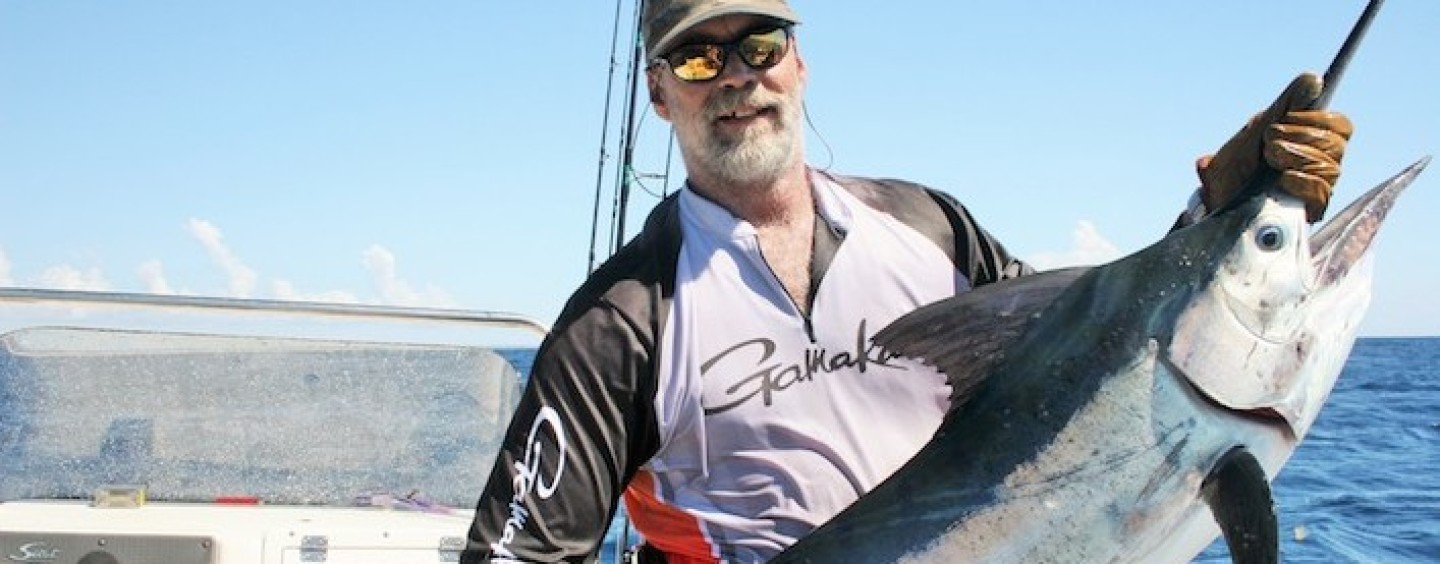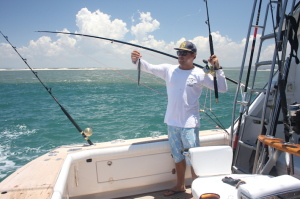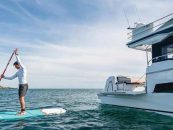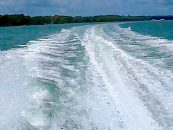Gold Coast has one of the most consistent marlin fishing locations in Australia. Local fishing personality Kevin Ballantine of Gold Coast Fishing Tackle shares his experience on how to catch this billfish—an activity that is said to be the pinnacle of offshore sport fishing.
During the next three months blue and striped marlin are the predominant species outside the 100-metre line. Juvenile black marlin are a coastal species and start arriving on their southern migration late November. Their numbers rapidly increase as the water temperature rises and the East Australian Current pushes close to the coast.
The right conditions
The most productive fishing areas in Southeast Queensland are abundant and constant food-rich areas that will attract and hold large numbers of marlin and other apex predators for as long as the baitfish schools remain prolific. The aptly named Spot X and Deep Trag locations in 85 metres of water are famous areas where massive schools of slimy mackerel congregate and hauls of six, seven or more little blacks are commonplace, most of them tagged and released.
The best technique and strategy for catching marlin is trolling a spread of small skirted lures in the 6-8’’ range—a great way to cover ground visually searching for bait schools on the surface or by scanning depth sounders to find deeper bait. Other indicators include water temperature, dirty water colour changes, current lines, feeding birds or dolphins, or floating objects. Basically, anything out of the norm needs to be investigated. Live baiting is another effective way to catch marlin once the bait has been found.
The best times and seas for marlin are during the southeast trade winds, which tend to push the warmer current closer to land. Any session that allows you to fish two-tide changes will enable you to try a variety of locations. Usually, 10 to 15 knots of breeze is perfect, while fishable wave heights and conditions will depend on the size of individual vessels. Your boat size will determine what conditions you can stay out in as plenty of billfish have been caught off the Gold Coast in small vessels. Anglers should be reminded that the Seaway Bar needs to be crossed and conditions may not be the same on the return journey as it was when coming out.
Pictured: Ben Job preparing a skipping garfish to be fished along the dirty water line.
Equipment
The best tackle is light overhead game outfit that is great for trolling or live baiting, as are bait-runner style spinning reels loaded with braided line that work equally as well and are a lighter option.
When choosing a reel, Shimano have three preferred overhead options the longtime favourite the TLD 20, the Tyrnos and the glamour model the Tiagra 16 on which 8 or 10 kilo mono is perfect.
In spinning reels, the Baitrunner 1200d loaded with 30 or 50lb braid is a deadly and lightweight combination. Recommended rods are fully rollered 8 to 10 kilo T-curves that match up perfectly with the Tiagras or roller tipped backbones for the TLD and Tyrnos models. The 1200d matches up with Shimano stick bait special rod and suits braided line up to 50 lb.
Skirted lures dominate the local captures and Australia has been blessed with a number of master lure makers. Brands such as Meridian, Pakula, and the locally made Black Snack Hotlips work perfectly and have proven to be one of our mainstays. If your preference is live bait, using live slimy mackerel or yellowtail is quite easy when the bait is packed up hard. Skilled deckies can rig a variety of different baits such as garfish, mullet, bonito, slimies and yellowtail to either work as a deep swimming bait or a skipping bait on the surface—both styles are dynamite in the right circumstances.
Be alert!
Pay attention to every aspect of your immediate environment such as the stage of tide, water colour, sounder readings and radio chatter. If another boat is hooked up, give the boat a bit of space as small marlin make rapid directional changes with cut-offs or fish crashing onto boats. This happens every year so pay attention to avoid danger.
Once you have hooked a marlin, do not be frightened to let the fish take plenty of line if it is jumping madly all over the place. The last thing you want is for it to end up in the cockpit. Keep the line tight and wind the fish in smoothly.
The pelagic species of fish frequent similar water conditions to marlin and are a commonly encountered bycatch. So do not be surprised if you hook a mahi mahi, wahoo, yellowfin tuna, and Spanish and spotty mackerel in your quest to chase the elusive marlin.
Editorial with Andy Kancachian




























